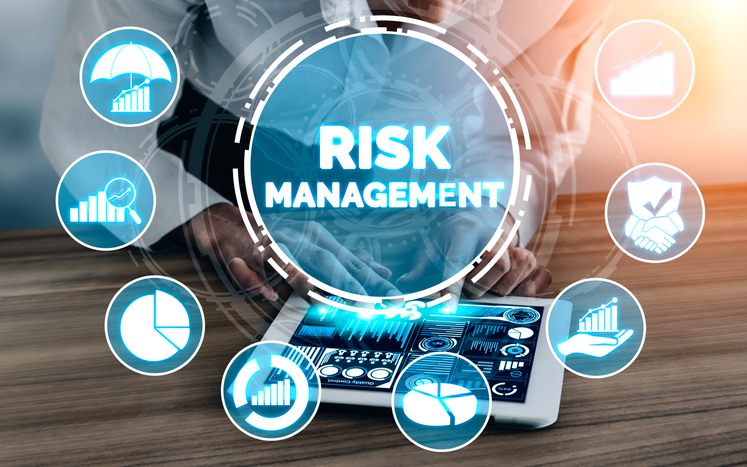Risk management is an essential practice for any organization aiming to navigate the complex business landscape successfully. With the increasing number of risks and regulatory requirements, companies must adopt effective strategies to identify, assess, and mitigate potential threats. In this digital era, risk management software has emerged as a valuable tool for streamlining the entire risk management process while ensuring legal compliance. In this article, we will explore the significance of risk management software, its key features, benefits, and its connection with legal compliance.

Understanding Risk Management Software
Risk management involves identifying and assessing potential risks that may impact an organization’s objectives and implementing strategies to minimize their impact. Risk management software plays a pivotal role in this process by providing a centralized platform to manage and monitor risks effectively. It enables businesses to automate risk assessments, track risk mitigation activities, and generate insightful reports. By leveraging advanced analytics and reporting capabilities, risk management software empowers organizations to make informed decisions and proactively manage potential risks.
Key Features of Risk Management Software
Risk Identification and Assessment
Risk management software facilitates the systematic identification and assessment of risks across various business areas. It enables organizations to categorize risks, assign likelihood and impact ratings, and prioritize mitigation efforts. By capturing relevant data and providing a holistic view of risks, this software empowers decision-makers to allocate resources efficiently and focus on critical areas.
Risk Monitoring and Reporting
Continuous monitoring of risks is crucial for effective risk management. Risk management software enables organizations to establish risk registers, set up automated alerts for risk triggers, and track mitigation actions in real-time. Furthermore, it generates comprehensive reports that provide insights into risk trends, risk exposure, and the effectiveness of mitigation strategies. These reports facilitate strategic decision-making and help organizations stay proactive in managing risks.
Compliance and Legal Considerations
Risk management and Legal compliance are deeply intertwined. Organizations must adhere to a multitude of laws, regulations, and industry standards. Risk management software helps in integrating compliance into the overall risk management framework. It provides features such as compliance checklists, document management, and automated compliance audits. By centralizing compliance processes, the software ensures that organizations stay updated with the latest regulations and reduce the risk of non-compliance.
Benefits of Implementing Risk Management Software
Enhanced Risk Awareness
Risk management software enhances an organization’s risk awareness by providing a comprehensive view of potential risks across different business units. By centralizing risk data and facilitating collaboration, the software enables stakeholders to understand the interconnectedness of risks and make informed decisions. This increased awareness helps in identifying emerging risks, evaluating their potential impact, and implementing proactive risk mitigation strategies.
Improved Decision Making
Informed decision-making is vital for managing risks effectively. Risk management software offers valuable insights through customizable dashboards, reports, and analytics. Decision-makers can access real-time data, track risk mitigation progress, and evaluate the effectiveness of existing controls. With this information at hand, they can make data-driven decisions, prioritize resources, and implement targeted risk mitigation strategies.
Streamlined Compliance Processes
Complying with various laws and regulations can be a complex and time-consuming process. Risk management software simplifies compliance by automating compliance checks, providing access to legislative libraries, and facilitating document management. It streamlines compliance processes, reduces manual errors, and ensures that organizations stay up-to-date with the latest regulations. By embedding compliance within the risk management framework, organizations can achieve a higher level of efficiency and confidence in meeting regulatory requirements.
Choosing the Right Risk Management Software
Selecting the appropriate risk management software is crucial to ensure its effectiveness and alignment with organizational needs. Here are some key considerations when choosing the right software:
Assessing Your Organization’s Needs
Before implementing Risk Management Software, it is essential to assess your organization’s unique requirements. Identify the specific risks your organization faces, the desired functionalities, and the level of scalability required. Understanding your needs will help in selecting a solution that addresses your specific challenges and supports long-term growth.
Evaluating Software Features and Functionality
Consider the features and functionalities offered by different risk management software solutions. Look for features like risk assessment templates, customizable workflows, integration capabilities, and reporting functionalities. Evaluate how well these features align with your organization’s requirements and ensure that the software is user-friendly and intuitive for seamless adoption.
Considering Budget and Scalability
Budget is a significant factor when selecting risk management software. Evaluate the total cost of ownership, including licensing fees, implementation costs, and ongoing maintenance expenses. Additionally, consider the scalability of the software to accommodate future growth and changing needs. Choose a solution that offers flexible pricing models and scalability options to ensure a long-term fit for your organization.
Implementing Risk Management Software Successfully
Implementing risk management software requires careful planning, effective training, and ongoing support. Here are some key steps to ensure a successful implementation:
Planning and Preparation
Thoroughly assess your organization’s readiness for implementing risk management software. Define clear goals, establish implementation timelines, and allocate sufficient resources. Engage key stakeholders, including risk management teams, IT personnel, and senior leadership, to ensure buy-in and support throughout the process.
User Training and Adoption
To maximize the benefits of risk management software, proper training and user adoption are essential. Provide comprehensive training sessions to users at all levels and ensure they understand the software’s functionalities and how to leverage its features. Encourage active participation, address user concerns, and monitor user adoption to drive engagement and ensure a successful implementation.
Ongoing Support and Maintenance
Post-implementation, establish a support mechanism to address any issues or questions that may arise. Regularly review and update the software as needed, considering feedback from users and evolving business requirements. Continuously monitor the software’s performance, gather user feedback, and make necessary adjustments to optimize its effectiveness.
The Link Between Risk Management and Legal Compliance
Legal compliance is a critical aspect of risk management. Organizations must navigate a complex landscape of laws, regulations, and industry standards to operate ethically and responsibly. Risk management software plays a crucial role in integrating compliance into the overall risk management framework.
Understanding Legal Compliance
Legal compliance refers to the adherence to laws, regulations, and standards applicable to an organization’s operations. Compliance obligations vary across industries and jurisdictions and may cover areas such as data protection, employee safety, financial reporting, and environmental sustainability. Failure to comply with legal requirements can result in severe consequences, including legal penalties, reputational damage, and financial loss.
Integrating Compliance into Risk Management
Risk management and legal compliance go hand in hand. Effective risk management considers compliance as a core component, ensuring that all risks related to legal obligations are identified, assessed, and mitigated. Risk management software enables organizations to streamline compliance processes by providing functionalities such as legislative library access, compliance checklists, and automated compliance audits.
Leveraging Risk Management Software for Legal Compliance
Risk management software offers specific features and capabilities that can streamline legal compliance processes. Here are some ways organizations can leverage risk management software for legal compliance:
Legislative Library and Regulatory Updates
Risk management software often includes a legislative library that provides access to relevant laws, regulations, and industry standards. This feature ensures that organizations stay updated with the latest compliance requirements. The software can send notifications and alerts regarding regulatory changes, allowing organizations to adapt their compliance strategies accordingly.
Document Management and Compliance Audits
Risk management software facilitates efficient document management, enabling organizations to store, organize, and track compliance-related documents. It provides a centralized repository for policies, procedures, permits, and other compliance documentation. The software also automates compliance audits by generating compliance checklists, scheduling audits, and tracking findings, ensuring organizations meet regulatory requirements and maintain accurate records.
Conclusion
Effective risk management is essential for organizations to proactively mitigate potential risks and ensure legal compliance. Risk management software streamlines the risk management process, enhances risk awareness, improves decision-making, and simplifies compliance requirements. By choosing the right software, implementing it successfully, and leveraging its features for legal compliance, organizations can establish a robust risk management framework that protects their reputation, drives business growth, and fosters a culture of compliance.



